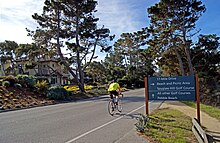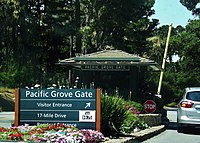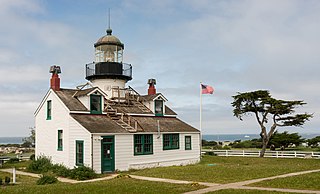
Pacific Grove is a coastal city in Monterey County, California, in the United States. The population at the 2020 census was 15,090. Pacific Grove is located between Point Pinos and Monterey.

Del Monte Forest is a census-designated place (CDP) in Monterey County, California, United States. As of the 2020 census, the CDP had a total population of 4,204, down from 4,514 at the 2010 census. The census area includes the separate well-known community of Pebble Beach.

Pebble Beach is an unincorporated community on the Monterey Peninsula in Monterey County, California, United States. The small coastal residential community of mostly single-family homes is also notable as a resort destination, and the home of the golf courses of Cypress Point Club, Monterey Peninsula Country Club, and Pebble Beach Golf Links. Nonresidents are charged a toll to use 17-Mile Drive, the main road through Pebble Beach, making it a de-facto gated community.
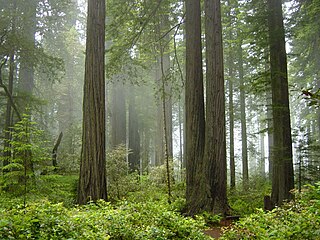
The Northern California coastal forests are a temperate coniferous forests ecoregion of coastal Northern California and southwestern Oregon.
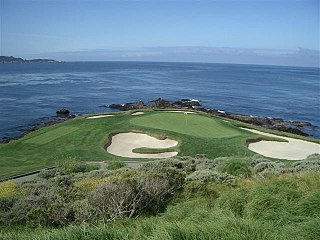
Pebble Beach Golf Links is a public golf course on the West Coast of the United States, located in Pebble Beach, California.

The Lone Cypress is a Monterey cypress tree located in Pebble Beach, California. Standing atop a granite headland overlooking Carmel Bay, the tree has become a Western icon and has been called one of the most photographed trees in North America.

Ghost Tree is a famed big wave surfing location off the 18th hole of Pebble Beach Golf Links in Pebble Beach, California. The wave breaks off the rock-strewn shoreline known as Pescadero Point. On rare winter days with the proper westerly angle, waves are focused by the deep Carmel Canyon to rear up as much as 60 ft (18 m) in height. Formerly known as Pesky's, Ghost Tree is considered one of the most dangerous waves in the world due to its slab shape, massive boils, strong current, bull kelp, and the underwater labyrinth of natural rock pillars in the impact zone. It is also frequented by white sharks.
Del Monte is a district of Monterey, California. It was formerly an independent unincorporated community in Monterey County. It is located in the east part of Monterey, at an elevation of 16 feet.

Samuel Finley Brown Morse was an American environmental conservationist and the developer of Pebble Beach. He was known as the Duke of Del Monte and ran his company from the 1919 until his death in 1969. Originally from the eastern United States, Morse moved west and fell in love with the Monterey Peninsula, eventually owning and preserving vast acreage while also developing golf courses and The Lodge at Pebble Beach.
Rancho Pescadero was a 4,426-acre (17.91 km2) Mexican land grant in present day Monterey County, California given in 1836 by Governor Nicolás Gutiérrez to Fabián Barreto. Pescadero means fishing place in Spanish. The grant extended along the Pacific coast from Rancho Punta de Pinos and Seal Rocks south to Carmel by the Sea and encompassed present day Pebble Beach, California.

David Jacks was a powerful Californian landowner, developer, and businessman. Born in Scotland, he emigrated to California during the 1849 Gold Rush, and soon acquired several thousand acres in and around Monterey, shaping the history of Monterey County in the first decades of American possession. He is also credited as being the first to market and popularize Monterey Jack cheese. He was born David Jack, but took to spelling his last name "Jacks" once in California.
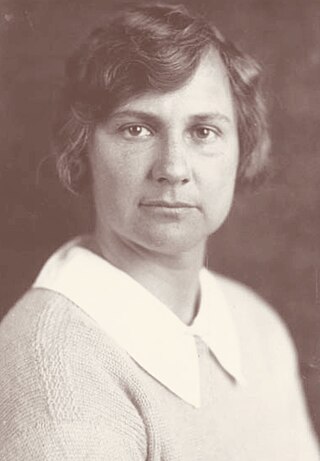
Marion B. Hollins was an American amateur golfer. She is known as an athlete and as a golf course developer, one of the only known female golf course developers in history. She won the 1921 U.S. Women's Amateur and was runner-up in 1913. She also had many other amateur wins. She was the captain of the first U.S. Curtis Cup team in 1932.

The Pacific Improvement Company (PIC) was a large holding company in California and an affiliate of the Southern Pacific Railroad. It was formed in 1878, by the Big Four, who were influential businessmen, philanthropists and railroad tycoons who funded the Central Pacific Railroad, (C.P.R.R.). These men were: Leland Stanford (1824–1893), Collis Potter Huntington (1821–1900), Mark Hopkins (1813–1878), and Charles Crocker (1822–1888). They owned the company, each with 25% interest. Archived records date from 1869 to 1931.
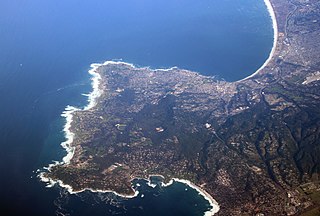
The Monterey Peninsula anchors the northern portion on the Central Coast of California and comprises the cities of Monterey, Carmel, and Pacific Grove, and the resort and community of Pebble Beach.
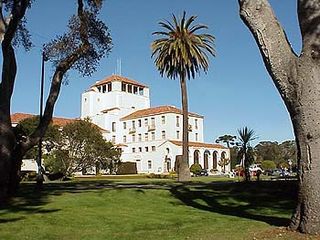
The Hotel Del Monte was a large resort hotel in Monterey, California, from its opening in 1880 until 1942. It was one of the finest luxury hotels in North America. During World War II, it closed and the building was leased to the United States Navy. It first was used by the Navy as a school where enlisted men spent the second, third, and fourth months of an 11-month course being trained as electronic technicians. Later the Hotel Del Monte became the Naval Postgraduate School.

Carmel Woods is an unincorporated community in Monterey County, California, United States. It is located adjoining the northern city limits of Carmel-by-the-Sea and adjacent to Pebble Beach. Carmel Woods was laid out in 1922 by developer Samuel F. B. Morse (1885–1969). It included a 25-acre (0.10 km2) subdivision with 119 building lots. Carmel Woods was one of three major land developments adjacent to the Carmel city limits between 1922 and 1925. The other two were the Hatton Fields, a 233 acres (94 ha) between the eastern town limit and Highway 1, and the Walker Tract to the south, which was 216 acres (87 ha) of the Martin Ranch called The Point.

Thomas Albert Work was an American businessman and banker of Pacific Grove, California, known around Monterey as T. A. Work.

El Carmelo Hotel was Pacific Grove's first hotel, opened to guests on May 20, 1887. It was sometimes called the sister of the Hotel Del Monte. It was located on Lighthouse Avenue between Fountain and Grand Avenues, Pacific Grove and owned by the Pacific Improvement Company (PIC). In 1907, the name of the hotel changed to the Pacific Grove Hotel. In 1917, the PIC decided to dismantle it and use the wood in the reconstruction of The Lodge at Pebble Beach, California that had burned down on December 17, 1917. The empty block was sold to W. R. Holman in 1919 to open the Holman Department Store.
